This is easily one of the best mods ever created for this game. However when I look at the original vanilla ballista (Arcubalista in this game), catapult, trebuchet (Thundercart), ladders, siege towers and rams I don't really get such an immersive feel.. I'm sure Chinese siege engines looked so much different than the vanilla stuff so I just did a quick Internet (re)search about this siege engines reskin/rework request that I want to make. I don't know if it has already been rquested or is already being worked on or Gigantus already stated that this is not possible. If so then just delete this unnecessary thread.
Here is the Chinese Cloud Ladder developed by Gongshu Ban, a famous carpenter of the Lu kingdom in the Spring and Autumn period (this period is prior to the current timeframe of the game). The advantage of this ladder is obiviouly that it can't be knocked off the wall however it is probably slower to trasnport than mobile ladders. You may ask why should this slower ladder be implemented in the game when the vanilla ladder is faster and also can't be knocked off the wall? Well, let me tell you why: since Medieval 2 was released it has always been so annoying that normal ladders can't be knocked over the wall and that they are actually more effective than siege towers. It also takes an unrialistically LOT of time to destroy it because it has so many hit points. My request is the following: implement the "Cloud Ladder" alongside the vanilla ladder for all Chinese factions and give only the vanilla ladder to backwater factions like The Southern Tribes faction but you should reduce it's hitpoints so that it can be destroyed easily and also it would be so cool if you can give the ability for units on the wall to knock the ladders off the wall (now how easy knocking a ladder off the wall should depend on how much attack the unit on the wall has, I would suggest).
Now for the siege tower. As in Medieval 2 and also in this mod there is the question: why should we build siege towers when they are slower than ladders and also soldiers need a huge amount of time to climb them up in order to assault the walls? Even if you include the Could Ladder in the game, the problem is the same. How I think this should be fixed is making siege towers work like in Rome 2 where the soldiers that are moving the siege tower are also in it and the siege tower's gate automatically goes down once the tower reaches the wall. Another request: if a unit of archers/crossbowmen are stationed in the siege tower could they be given the ability to fire from there? Aditionally, if it is historical accurate, could you also inplement an AI controlled ballista on top of the siege tower that fires at targets on the wall just like in Rome 1? All this would be so awesome if implemented in all Medieval 2 mods not just this one. Here is the Chinese siege tower named the "Cloud Bridge":
Here is a siege tower from Rome 2 where some soldiers are housed in the tower and not outside of it in order to directly assault the walls. It's not t most clear picture but you can see them:
For the catapults now. The Xuanfeng or "Whirlwind" is a traction catapult which first emerged in the 1st century A.D. and is a direct descendant of the first Mohist traction catapults of the 4th - 3rd century B.C. The throwing power in a Xuanfeng comes from a team of people pulling downwards on ropes tied to the short arm of the throwing arm. The power of this catapult is limited only by the number of pullers able to fit in the space available below the lever arm. The largest versions of the Xuanfeng were recorded to have as many as 80-120 pullers.
Catapults were also mentioned as long-ranged artillery used against enemy siege towers as well as in use for the dispersal of noxious gas canisters (could this be a special type of ammunition?) to break enemy troop formations.
Like all traction catapults, the Xuanfeng Pao could throw projectiles with a great variation in range simply by changing the number of pullers. The traction catapult also enjoyed a high rate of fire since the lowering of the throwing arm for reloading was a simple matter of the pullers releasing their ropes. Typical for Chinese catapults, the throw arms were made up of bundled bamboo rods. As a light catapult, the Xuanfeng would probably have been mounted with anywhere from 1 to 4 or 5 bamboo rods, with the increasing scale corresponding to an increasing ability to throw heavier projectiles.
From an account in the Zi Zhi Tong Jian or “History as a Mirror”, General Li Guangbi’s Imperial army confronted the rebel leader Shi Siming’s army across the Huangho. In an attempt to dislodge General Li’s troops from a temporary floating bridge strung across the river, Shi Siming sent hundreds of battle ships pushing burning boats at the front in the hopes of destroying the bridge. Using long poles to hold the burning boats at bay, the attack was successfully repulsed by the use of catapults against what must have been highly maneuverable rebel ships. While it is unclear what kinds of catapults General Li’s troops arrayed on the northern bank of the river used, this account clearly illustrated the effectiveness of, and incredible accuracy achieved by Tang catapults.
Unlike European catapults, the Chinese anchored their catapults by sinking the legs a few feet into the ground. Many illustrations of the Xuanfeng found in classical Chinese military manuals are therefore shown with very small bases. A typical Xuanfeng stood anywhere from twice a person's height to about 3 times a person's height. Because of its small size, it was easy to transport it around by dismantling it into its various components, and to set it up again wherever it was required (this should mean it shouldn't reduce your armyes movement points, I think)
There are basically 4 general variants of the Xuanfeng Pao:
The basic Xuanfeng had 2 legs sunk into the ground for stability. The central pole was fixed to the two legs and the pivot was at the top of the pole, allowing for the entire head assembly to turn 360 degrees. It was a very light catapults for throwing small rocks, "shrapnel" balls, gunpowder explosives (not the case in this timeframe), human heads etc.
This catapult was the mainstay of Chinese field artillery for centuries.
The slightly heavier variant of the Xuanfeng was mounted on a more stable 4-leg base frame with horizontal crossbracing.
This heavier Xuanfeng could still maintain a 360 degree field of fire while allowing for the firing of slightly heavier projectiles. However, the pivot for this heavier Xuanfeng was at the base instead of at the top. This meant that the central pole turned along with the head assembly. This allowed for heavier projectiles to be fired since the monolithical head-column arrangement effectively lowered the fixity point of the rotational joint, making the catapult more stable.
More stable than the basic Xuanfeng, this catapult was probably not countersunk into the ground or at best at a very shallow depth. This allowed for ease of deployment without sacrificing stability and hence firing accuracy.
Xuanfeng batteries were made up of a row of light Xuanfeng catapults all mounted in a row on a single simple base. Like the basic variant, the head assemblies were made to swivel, but in addition the whole mount was also made to swivel 360 degrees, allowing for a lot more flexibility in usage.
The Xuanfeng batteries were probably used in battle to fire projectiles enmass, at the same time and in the same direction, to create fire saturation over a given enemy position. This multiple catapult was also conceivably used to create a continuous stream of covering fire during a battle to keep the enemy from returning fire.
The Xuanfeng was also sometimes mounted on a mobile wheeled platform but was still based on the basic Xuanfeng variant. The basic variant with dual fixed legs and top pivot was fairly common while the heavier variant with a 4-leg base frame and base pivot was less common.
The instance much often cited when catapults were first wheel mounted was during the Battle of Guandu when Liu Ye and Cao Cao of Wei deployed mobile catapults called the "Pili che" or (Thunderbolt cart).
These mobile catapults could be towed out to wherever they were needed, and the actual catapult throw-arm and central post were probably slotted in on-site when needed. The mounted Xuanfengs were light to medium sized catapults, overlapping in power and range at the upper end with that of the Hudun Pao. The development of mobile catapults which did away with the traditional sunken-leg base might have been a consequence of increasingly accurate enemy counter-battery fire.
The following one seems to be a mangonel or a trebuchet rather than a simple catapult as we know it. So you can reskin the Thundercart with this one:
Now in the following picture you can see a Cloud Ladder however in the backgroung there is also a catapult (I think).
The crossbows and the arcuballista. The Lian Nu, or multiple-bolt crossbow is a generic term used to mean any type of crossbow which fired multiple bolts at the same time. The term Lian Nu first appeared up and around the end of the Warring States period, not long after the invention of the Chinese crossbow in the State of Chu during the Spring and Autumn period.
References to the Lian Nu or multiple-bolt crossbow cropped up often, and in various forms throughout Chinese military writings and records. From the Huai Nanzi of ca. 120 B.C. we find a wheeled Lian Nu mentioned, giving us a precious glimpse into Han era field artillery.
"Ancient soldiers were armed only with bows and swords; their spears had no pick-axes and their bills no hooks. But the soldiers of the late times have had to be equipped with battering rams for attack, and shields against the arrows; they shoot with multi-bolt crossbows which are lashed to carriages for the fight."
Then again, in the Han Shu or Records of the Han, recording Li Ling's campaign of 99 B.C., we find a record of wheel-mounted Lian Nu used in the battlefield. Beleaguered and harassed in a fighting withdrawal deep in nomad country, Li Ling's army used what seemed to be wagon-mounted multibolt crossbows in a defensive formation to defend against 30,000 attacking Shanyu cavalry.
In a particularly inventive use of the crossbow we find from Chapter 5, Methods, Weapons and Techniques, of Ralph Sawyer's book "Fire and Water":
"...around A.D. 180 when Yang Xuan, Grand Protector of Lingling, attempted to suppress heavy rebel activity with badly inadequate forces. Yang's solution was to load several tens of wagons with sacks of lime and mount automatic crossbows on others. Then, deploying them into a fighting formation, he exploited the wind to engulf the enemy with clouds of lime dust, blinding them, before setting rags on the tails of the horses pulling these driverless artillery wagons alight. Directed into the enemy's heavily obscured formation, their repeating crossbows (powered by linkage with the wheels) fired repeatedly in random directions, inflicting heavy casualties. Amidst the obviously great confusion the rebels fired back furiously in self-defense, decimating each other before Yang's forces came up and largely exterminated them."
From the primary sources, the crossbow mentioned in the above account was a Lian Nu or multiple-bolt crossbow.
The ability of the Lian Nu to discharge multiple bolts would have been a highly valued advantage in situations where density of fire was required. This advantage however came at the price of reduced accuracy. Bolts closer to the ends of the bow would have a greater tendency to veer away from the centre due to the diagonal force imposed on the notch by the angle of the bowstring. These side bolts would also necessarily be shorter than the central bolt that logically would not only be the longest, but also the most true in terms of flight trajectory. Somewhat like buckshot from a modern day shotgun, the Lian Nu would have fired a scatter of bolts forward in a spread. Some depictions of the Lian Nu show bolt grooves in which the multiple bolts would rest in prior to firing. This must have been an attempt to regulate the flight of the side bolts, to keep the spread as close to the central bolt as possible when hitting a target.
The famous strategist Zhuge Liang of Shu (Han) during the Three Kingdoms Period, was credited to have invented in A.D. 225, a Lian Nu which could fire as many as 10 iron bolts simultaneously, each 20cm long. It was called the Yuan Rong or "Primary Weapon". Unfortunately, we know little else about his invention other than that it was another Lian Nu.
A clearer picture of the Lian Nu emerged about 500 years later. Li Quan in A.D 759 gave an extremely complete account of one type in his writings:
"The arcuballista is a crossbow of a strength of 12 dan, mounted on a wheeled frame. A winch cable pulls on an iron hook; when the winch is turned round until the string catches on the trigger the crossbow is drawn. On the upper surface of the stock there are seven grooves, the centre carrying the largest arrow. This has a point 275cm long and 125cm round, with iron tail filns 125cm round, and a total length of 91.5cm. To left and right there are three arrows each steadily decreasing in size, all shot forth when the trigger is pulled. Within 700 paces (525m) whatever is hit will collapse, even solid things like ramparts and city towers."
These kind of arcuballista-crosbows are a must have. A modification in unit stats would also be good. Also an increase in unit size from 2 to 4 would be good (not just for the arcuballista-crossbow unit but also for other artillery pieces) it would actually increase the chance to hit something as artillery in Medieval 2 vanilla is very unaccurate.
I have also found this cool Chinese siege tower on the Internet but I can't find any information about it. Could this be imnplemented? Also could walls of max level cities be that huge?
Is this how a Chinese battering ram looked?
Ok.. I feel stupid for this but maybe, just maybe this..lego.. toy.. is based on a historical accurate representation?
I think this is actually impossible but it's worth a try to ask. Could you implement these wall defence, counter cloud ladder weapons? Ye Cha Lei or Malevolent Wood and the Ya Pai or Wolf Teeth Striker (the left one is the Malevolent Wood, and the right one is the Wolf Teeth Striker).
Another similar ancient Chinese weapon with similar purposes was the Zhuan Lei, or the Brick Beam. It's a long cylindrical brick swing from city walls to hit the climbing enemy soldiers.
I believe this is all. If this is not possible than I'm sorry for wasting your time and/or unnecessarelly filling the forum. It would however be cool to see this stuff.
Sorry for any missed out grammar and/or writing error.




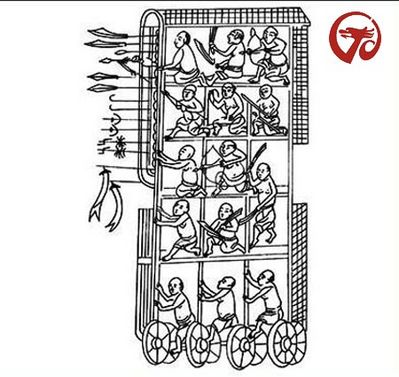



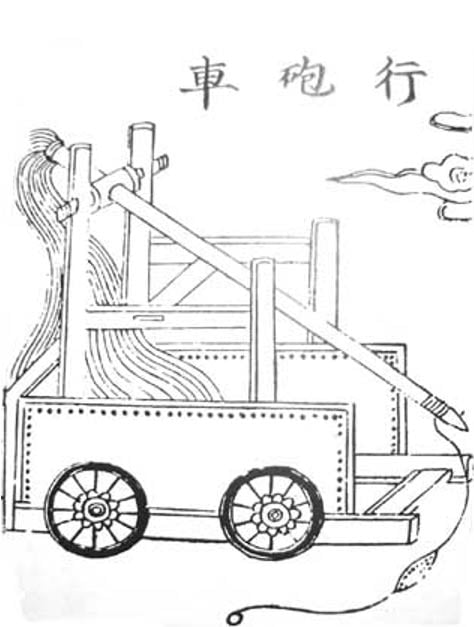

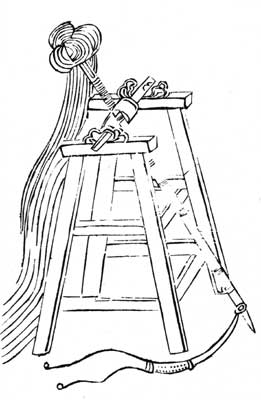


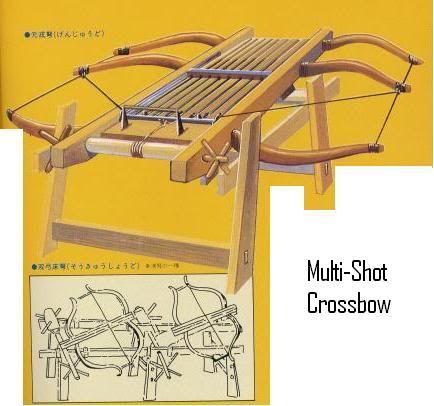
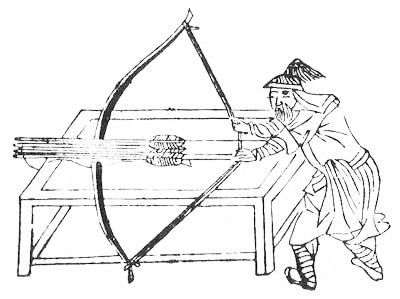
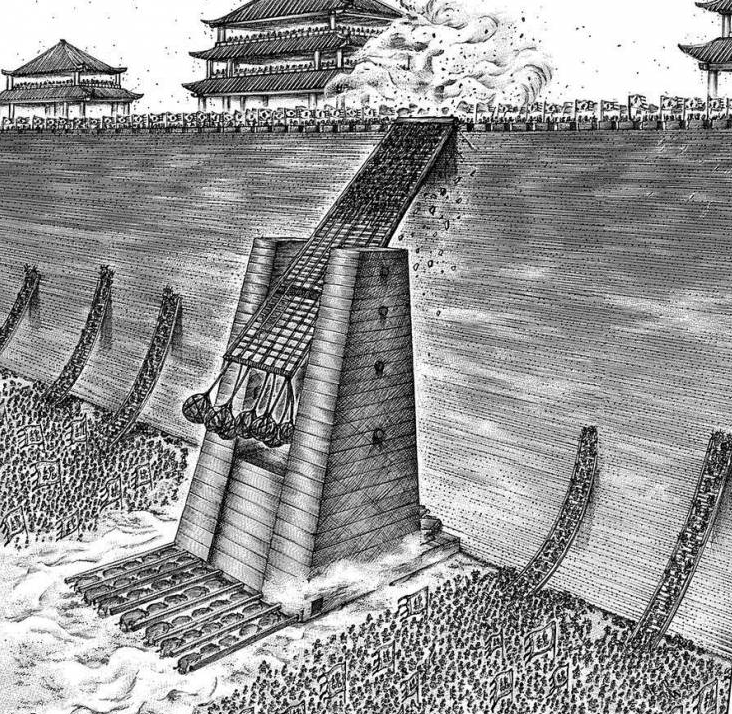

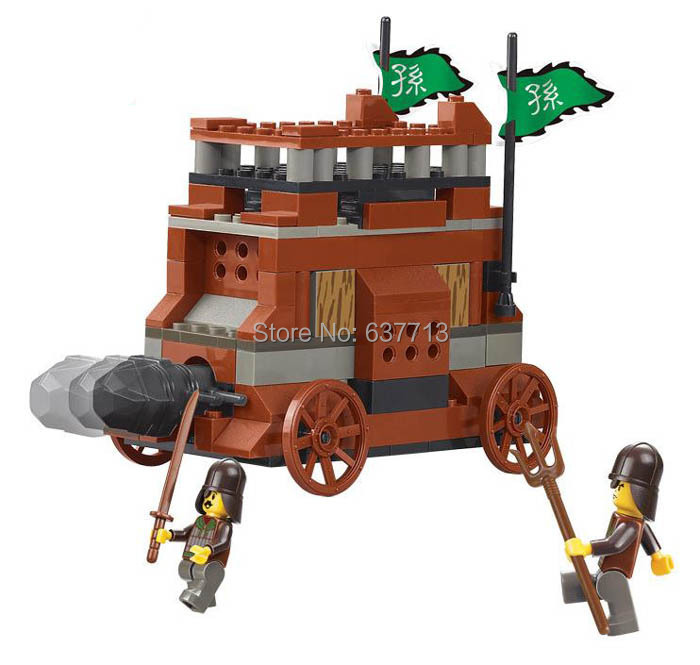
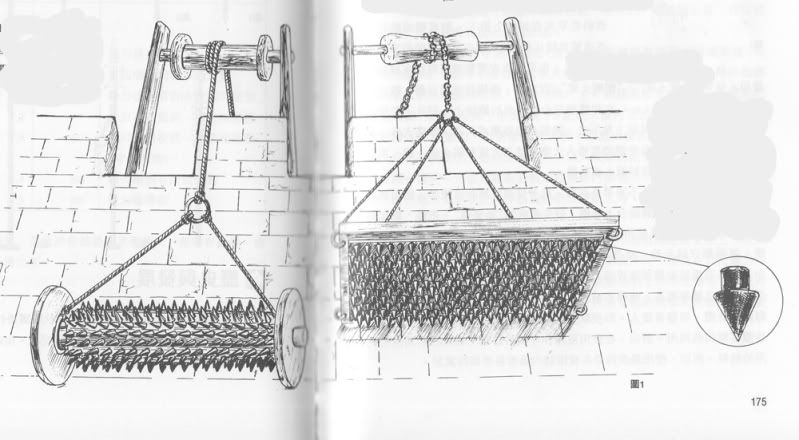




 Reply With Quote
Reply With Quote




























































